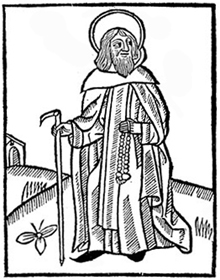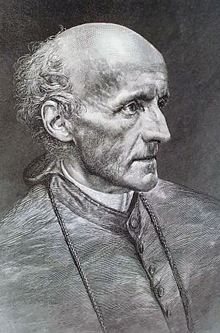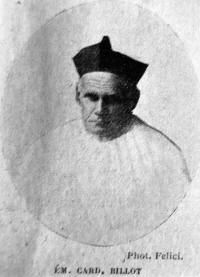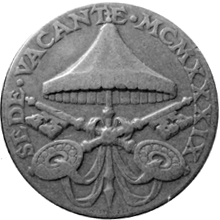Smithsonian Magazine, April, 1977, Page 60-61 :
“Those great patrons of the arts, the Renaissance popes, usually commissioned the artist in their employ – Raphael, Titian, Velazquez – to paint their portraits. The result was some of the greatest paintings ever produced.
“Since then the practice has fallen off (along with the art of portraiture). So it was with some surprise that the world learned last fall that a portrait had been painted of Pope Paul VI, even though he did not commission it or, for that matter, sit for it. Moreover, it was in a semiabstract style unlike that of any previous papal portrait.
“The artist was a 42-year-old German named Ernst Gunter Hansing. Pope Paul did not at first respond to having his picture painted with any enthusiasm, but he later relented. Hansing was given a small studio in the building that houses the Vatican gas station, and for the next two and a half years, during 13 separate visits to Rome, he observed his subject from the front row at papal audiences.
“The finished portrait has been accepted by the Pope. His Holiness described the painting as “a mirror of the situation in the Church today.” Earlier, on seeing a working sketch, he made what was probably his closest approach to art criticism. It was gracefully oblique: “One almost needs a new philosophy to grasp the meaning of this in its context.”
From the Nov. 8, 1971 issue of TIME magazine:
Behind a locked door in Vatican City waits a present for Pope Paul VI that may conceivably please its recipient but has already shocked many who have seen photographs of it. The gift is a large (about 71 ft. by 12 ft.) portrait of His Holiness, painted in a semi-abstract mode, in which the Pope’s emaciated, suffering face and folded hands are the focus of splintering shafts of light. German Painter Ernst Guenter Hansing, 42, sketched his subject during twelve protracted stays at the Vatican over a period of 21 years. Though he never had a private sitting, he was given a front-row seat at papal ceremonies in which to work. “I wanted more than just a picture of a person,” says Hansing, a Lutheran. “I wanted to show the tension-fraught situation of the church, caught in a multiplicity of issues, as reflected in the countenance of the Pope.”
Mr. Craig Heimbichner’s Analysis of the Masonic and Demonic Symbolism in the 1977 “Portrait” of Giovanni Montini/Paul VI
1. Three pillars
2. Two columns
3. Cresent moon
4. Various Pentagrams
5. Sphynx at the top of the pillar
6. The columns and angles combine to form a square and compass
7. The point within the circle at the top is an old Illuminati symbol
8. Above Paul VI’s head an abstract “eye in the triangle” I.E. the Eye of Horus or Set
9. A dagger is thrust in the papal tiara in the 30th Knight Kadosh Degree; here the pope clutches a dagger with a malevolent look.
10. Inverted crosses are Satanic, but so is Freemasonry


















This is a chaos of angles. No humanity or soul. Disorder everywhere. It’s a piece of junk, better to be burned. One of those items that art critics seem to positively gush in rapture over. Put it to the torch.
Pingback: Revisiting Paul VI’s Masonic Portrait – Ecclesiastical Freemasonry